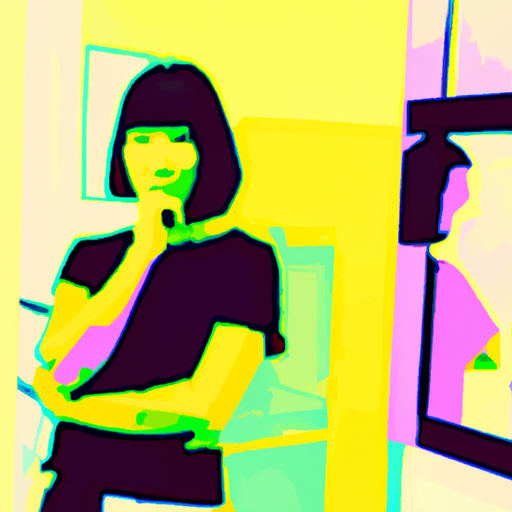
-
Table of Contents
- Webcomics and Digital Illustration: A Growing Medium
- The Rise of Webcomics
- The Advantages of Digital Illustration
- 1. Versatility and Flexibility
- 2. Efficiency and Productivity
- 3. Accessibility and Affordability
- The Impact on the Art World
- 1. Democratization of Art
- 2. Blurring of Boundaries
- 3. Global Reach and Community Building
- Opportunities for Artists
- 1. Self-Publishing and Monetization
- 2. Collaboration and Cross-Promotion
Webcomics and Digital Illustration: A Growing Medium

Webcomics and digital illustration have become increasingly popular in recent years, revolutionizing the way we consume and create visual content. With the rise of the internet and advancements in technology, artists and storytellers have found new avenues to showcase their work and connect with a global audience. In this article, we will explore the growth of webcomics and digital illustration as a medium, examining its impact on the art world, its advantages over traditional mediums, and the opportunities it presents for artists.
The Rise of Webcomics
Webcomics, as the name suggests, are comics that are published on the internet. They have gained immense popularity due to their accessibility, ease of distribution, and the ability to reach a wide audience. Unlike traditional print comics, webcomics can be easily shared and discovered through social media platforms, websites, and dedicated webcomic hosting platforms.
One of the key advantages of webcomics is the freedom it offers to creators. Unlike traditional publishing, webcomics allow artists to have complete control over their work, from the content to the release schedule. This creative freedom has led to a diverse range of webcomics, covering various genres, styles, and themes.
Webcomics have also democratized the comic industry, providing a platform for aspiring artists to showcase their talent without the need for a traditional publisher. This has led to the discovery of many talented individuals who may have otherwise gone unnoticed. The success stories of webcomic creators like Kate Beaton (Hark! A Vagrant) and Matthew Inman (The Oatmeal) serve as inspiration for aspiring artists looking to make a mark in the industry.
The Advantages of Digital Illustration
Digital illustration, which often goes hand in hand with webcomics, has also seen a significant rise in popularity. Digital illustration refers to the creation of artwork using digital tools such as graphic tablets, software, and computer programs. This medium offers several advantages over traditional illustration techniques.
1. Versatility and Flexibility
Digital illustration allows artists to experiment with various styles, techniques, and effects that may be difficult to achieve using traditional mediums. With a wide range of digital brushes, textures, and color palettes available, artists can create unique and visually stunning illustrations.
Additionally, digital illustrations can be easily edited and modified, providing artists with the flexibility to make changes without starting from scratch. This is particularly useful when working on collaborative projects or when creating illustrations for commercial purposes.
2. Efficiency and Productivity
Digital illustration streamlines the creative process, allowing artists to work more efficiently and productively. With digital tools, artists can quickly sketch, refine, and color their artwork, eliminating the need for physical materials and time-consuming processes such as scanning and cleaning up traditional sketches.
Furthermore, digital illustrations can be easily stored, organized, and shared digitally, reducing the need for physical storage space and making collaboration with other artists or clients more convenient.
3. Accessibility and Affordability
Unlike traditional art supplies, which can be expensive and require regular replenishment, digital illustration tools have become more accessible and affordable. Graphic tablets, once considered a luxury item, are now available at various price points, making them more accessible to artists of all levels.
Moreover, digital illustration software offers a wide range of features and functionalities, often at a fraction of the cost of traditional art supplies. This affordability has opened up opportunities for artists who may not have had access to expensive materials or art schools.
The Impact on the Art World
The growth of webcomics and digital illustration has had a profound impact on the art world, challenging traditional notions of art and expanding the possibilities for artistic expression. Here are some key ways in which this medium has influenced the art world:
1. Democratization of Art
Webcomics and digital illustration have democratized the art world, allowing artists from diverse backgrounds to share their work and gain recognition. The internet has provided a platform for marginalized voices and underrepresented artists to tell their stories and express their perspectives.
Platforms like Tapas, Webtoon, and Patreon have emerged as popular destinations for webcomic creators, offering monetization options and direct support from fans. This has enabled artists to earn a living from their work, bypassing traditional gatekeepers and establishing direct connections with their audience.
2. Blurring of Boundaries
Webcomics and digital illustration have blurred the boundaries between different art forms. Artists are no longer limited to traditional mediums but can combine elements of illustration, animation, and storytelling to create immersive and interactive experiences.
For example, webcomics like “Homestuck” by Andrew Hussie incorporate animated sequences, music, and interactive elements, transforming the reading experience into a multimedia adventure. This blending of mediums has opened up new possibilities for artists to engage with their audience and push the boundaries of storytelling.
3. Global Reach and Community Building
The internet has made it possible for webcomics and digital illustrations to reach a global audience. Artists can connect with fans from different countries, cultures, and backgrounds, fostering a sense of community and shared experiences.
Online communities and social media platforms have become hubs for artists and fans to interact, share their work, and provide feedback. This instant feedback loop not only helps artists improve their craft but also creates a supportive environment for creators to connect and collaborate.
Opportunities for Artists
The growth of webcomics and digital illustration has created numerous opportunities for artists to showcase their work, collaborate with others, and monetize their creations. Here are some key opportunities this medium presents:
1. Self-Publishing and Monetization
Webcomics allow artists to self-publish their work and monetize it through various channels. Artists can choose to offer their webcomics for free, relying on advertising revenue or crowdfunding platforms like Patreon for financial support. Alternatively, they can offer premium content, merchandise, or physical copies of their webcomics for sale.
Successful webcomic creators have also been able to leverage their online presence to secure book deals with traditional publishers, further expanding their reach and revenue streams.
2. Collaboration and Cross-Promotion
The internet has made it easier for artists to collaborate and cross-promote their work. Artists can team up with writers, colorists, or other illustrators to create webcomics with diverse perspectives and styles.
Cross-promotion between webcomic creators, through guest appearances or shared fan bases, can help artists reach new audiences and gain exposure. This collaborative approach not only enhances the quality of the work but also fosters a sense of community and support within the webcomic industry.
